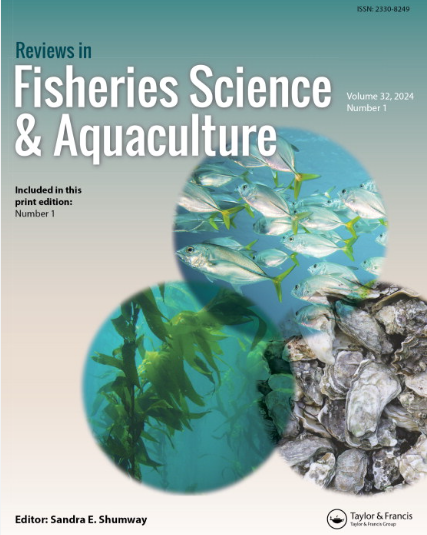基于物联网(IoT)的智能水产养殖实践的最新发展简评
IF 5.3
1区 农林科学
Q1 FISHERIES
引用次数: 7
摘要
摘要基于物联网(IoT)的智能水产养殖管理系统(SAMS)最近因满足日益增长的水产养殖产品需求而备受关注。SAMS使用先进的传感技术和现代网络系统,持续监测水质、动物健康和喂养行为,以提高产量。本综述旨在全面总结和讨论基于物联网的技术的最新进展,例如传感器节点、软件接口、人工智能、云计算和存储,以开发用于小型和大型水产养殖生产模块的可靠和稳健的SAMS。本综述末尾包含了一个未来展望部分,建议进行必要的研究,以扩大相关数字技术在水产养殖场的应用。这篇全面综述中的知识有助于科学界对物联网技术进行必要的进步和修改,也有助于现有和未来的养殖户采用现代SAMS来提高效益成本比。本文章由计算机程序翻译,如有差异,请以英文原文为准。
A Concise Review on the Recent Developments in the Internet of Things (IoT)-Based Smart Aquaculture Practices
Abstract A smart aquaculture management system (SAMS) based on the Internet of Things (IoT) has recently gained much attention for fulfilling the growing demand for aquaculture products. The SAMS uses cutting-edge sensing technologies with a modern networking system to continuously monitor water quality, animal health, and feeding behavior to improve the production yield. This review aims to comprehensively summarize and discussed the recent advancements in IoT-based technologies, e.g., sensors nodes, software interfacing, artificial intelligence, cloud computing, and storage, to develop reliable and robust SAMS for small- and large-scale aquaculture production modules. A future perspective section is included at the end of this review to recommend the needed research to be done to scale up the related digital technologies for application in aquaculture farms. The knowledge in this thorough review can be useful for the scientific community for needful advancements and modifications of the IoT technologies and for existing and future aquaculture farmers to adopt modern SAMS for improving the benefit-cost ratios.
求助全文
通过发布文献求助,成功后即可免费获取论文全文。
去求助
来源期刊

Reviews in Fisheries Science & Aquaculture
FISHERIES-
CiteScore
25.20
自引率
0.90%
发文量
19
期刊介绍:
Reviews in Fisheries Science & Aquaculture provides an important forum for the publication of up-to-date reviews covering a broad range of subject areas including management, aquaculture, taxonomy, behavior, stock identification, genetics, nutrition, and physiology. Issues concerning finfish and aquatic invertebrates prized for their economic or recreational importance, their value as indicators of environmental health, or their natural beauty are addressed. An important resource that keeps you apprised of the latest changes in the field, each issue of Reviews in Fisheries Science & Aquaculture presents useful information to fisheries and aquaculture scientists in academia, state and federal natural resources agencies, and the private sector.
 求助内容:
求助内容: 应助结果提醒方式:
应助结果提醒方式:


